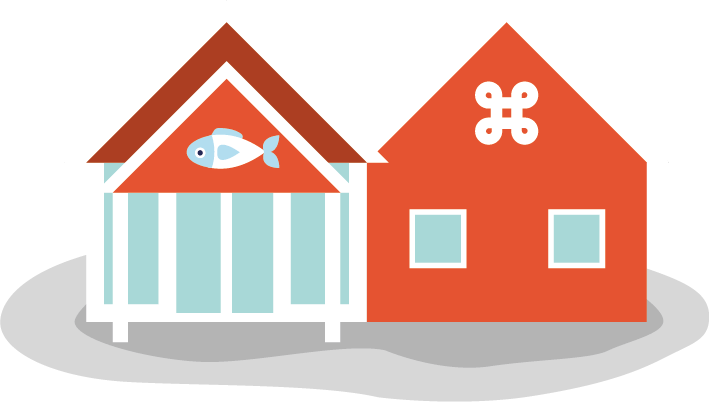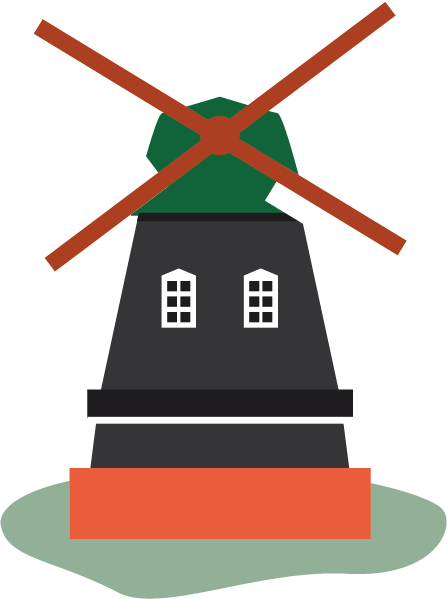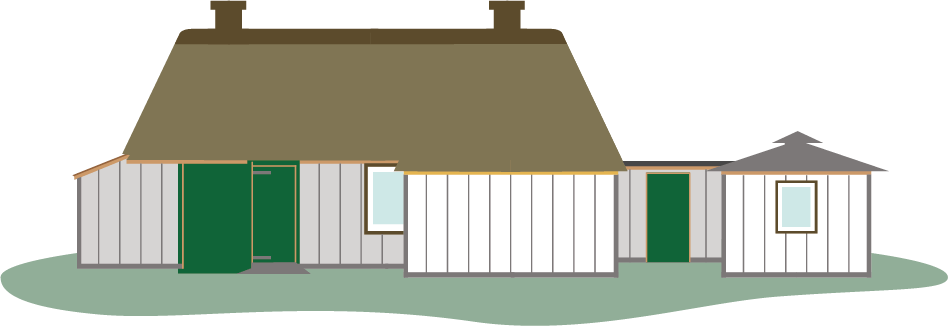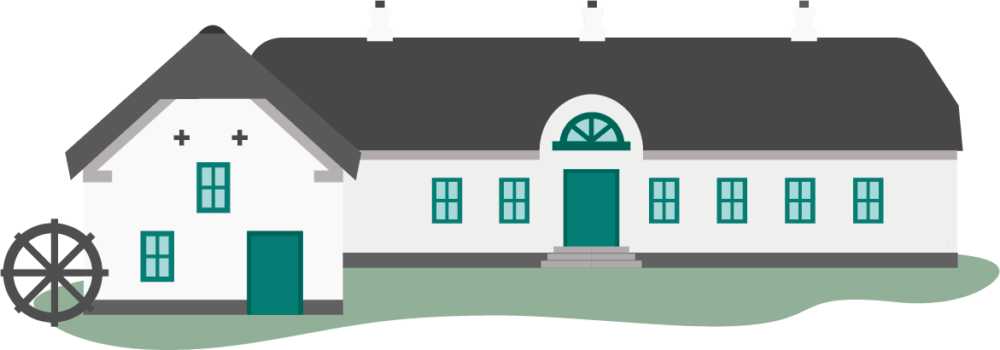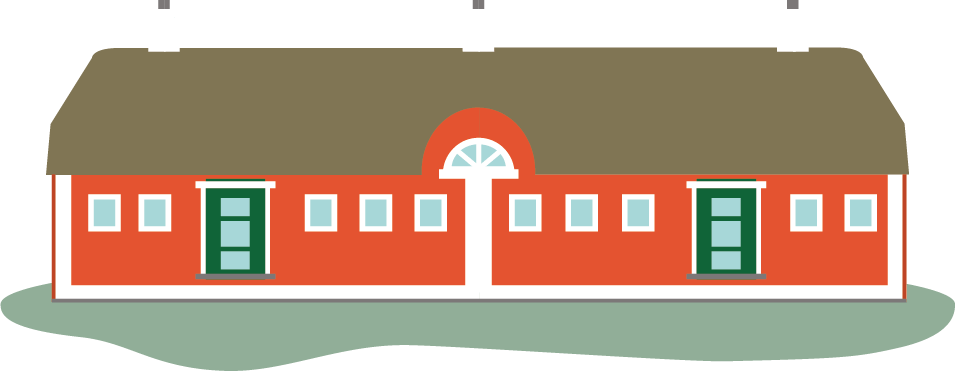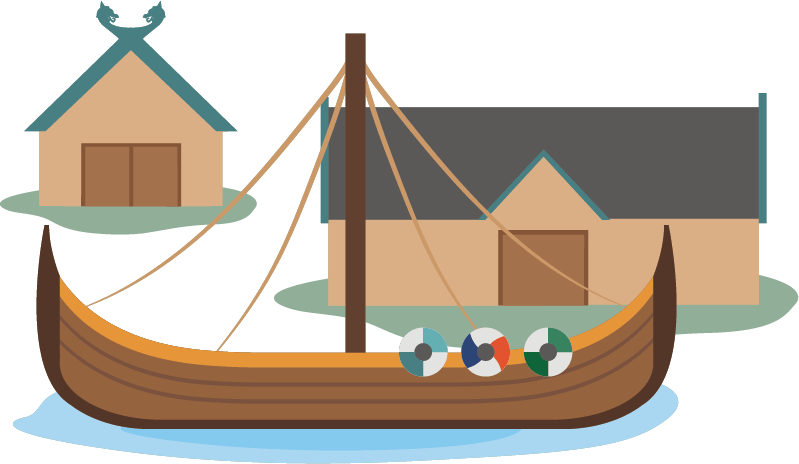Norse mythology and White Christ
The Vikings worshipped the Norse gods, led by Odin and gods such as Thor, Freyja and Freyr. One of the most important tasks of a Viking chieftain was to maintain a good relationship with the gods to ensure peace and fertility. Even before Harald Bluetooth introduced Christianity in 960, the Ribe area was already a place where the new god left his mark in the way the dead were buried. Asatru and Christianity coexisted at a time when Christianity was initially the king's religion.
At Bork Vikingehavn we have both a sacrificial site in honor of the ancient gods and a wooden church from the early days of Christianity.
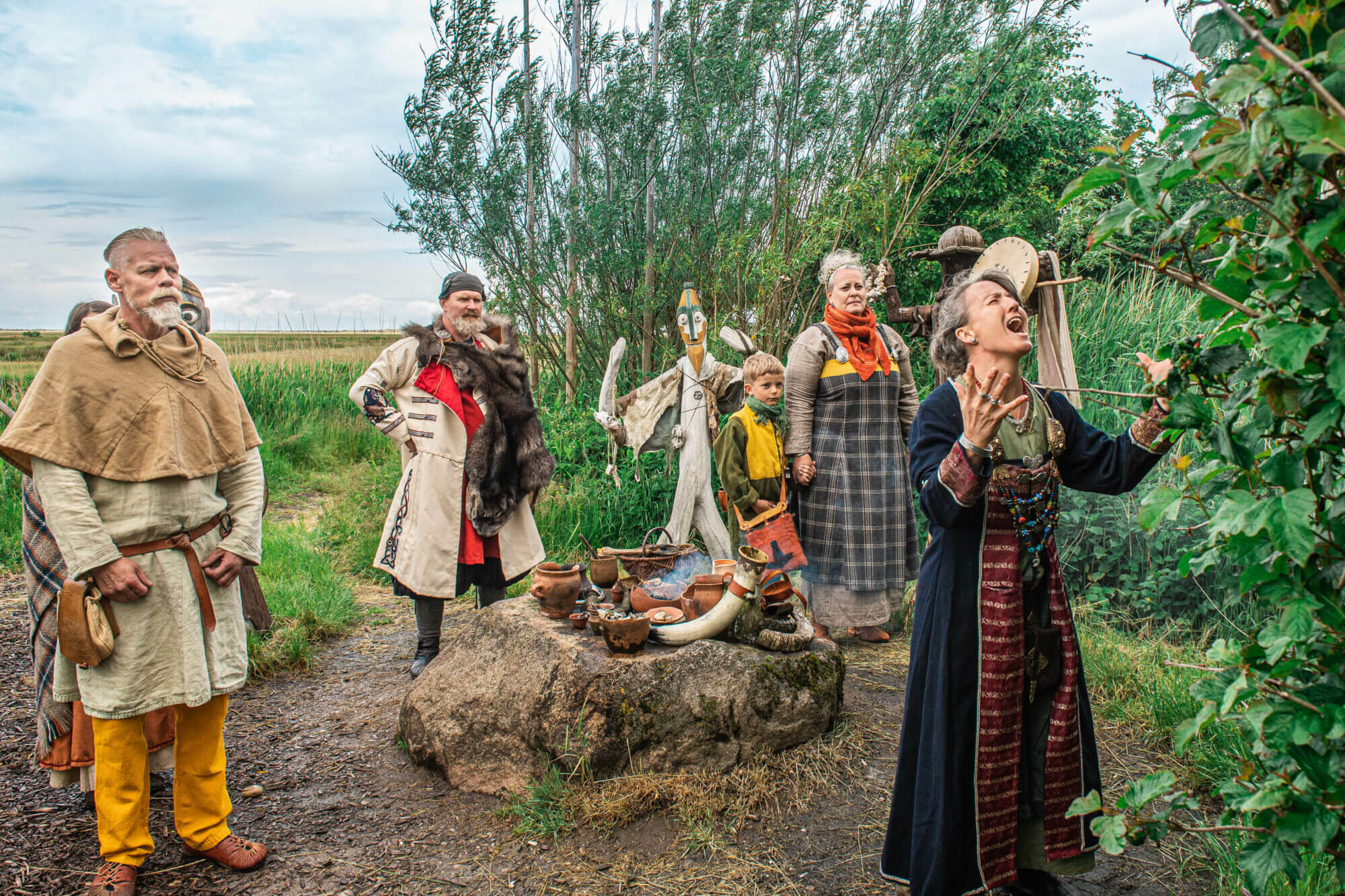
Place of sacrifice
The sacrificial site at Bork Vikingehavn is inspired by the Icelandic sagas of the Vikings. Here, the sacrificial site consists of a bluestone, surrounded by some of the most important Norse gods: Odin, Freyr, Freyja and Thor.
The largest of the four pagan festivals was the spring blót in honor of Freyr. He was the god of fertility of the fields and livestock. The symbol of Freyr is therefore a phallus. Only male animals were sacrificed at the spring blót: a cock, a dog, a ram, a boar, a bull, a stallion and a man - seven in total. The sacrificial animal had to be laid on the blót stone and have its carotid artery cut to wet the stone. The sacrifice was then hung up at the shrine.
The other festivals were Midsummer Blót, Harvest Blót and Jól (Christmas), which celebrated the return of the sun at the winter solstice. Ravens and wolves were attracted to the sacrificial site. Therefore, they are closely linked to Odin. He was also called 'All-Father', 'One-Eyed God' and was the supreme of all gods. Odin was the god of war and death, for it was he and the goddess Freyja who decided who was victorious and who fell on the field of honor. The fallen were then divided and half went to Odin's hird 'Einherjerne' in Valhal, while the others went to Freyja's hall in 'Folkvang'.
At Bork Vikingehavn you will also find the Norse goddess Hel, ruler of the realm of the dead. She was the daughter of the demigod Loki and the giant Angerbode, and her siblings were the Midgard Serpent and the Fenris Wolf. Hel was the name of both the goddess and the Viking realm of the dead. Although the word "hell" has its roots in "Hel", Hel was not an evil place, but a realm where all but warriors who fell in battle ended up.
The Fenris Wolf, too, has its place in the harbor. It was prophesied that at Ragnarok - the end of the world - the Fenris Wolf would grow so large that it would swallow the sun and kill Odin.

Wooden church - St. Erasmus Church
The wooden church at Bork Vikingehavn is dedicated to St. Erasmus. The church is a replica of the Christian churches that were built around 1000 years ago in marketplaces and in the courtyards of the lords, even while the asceticism, the belief in the Nordic gods, was still dominant.
The church is mainly based on finds of postholes from a wooden church under the stone church in Vorgod north of Skjern. Other archaeological excavations of wooden churches in Jutland are also included in the basic plan.
The church reconstructs a church room as it might have looked when Christianity was introduced. The stepping stone in front of the door is a copy of a rune stone that can be seen today in the wall of Hanning Church. What is special about this rune stone is the depiction of a hammer: Thor's hammer. The inscription reads: "V..., son of Tues, erected this stone after Gyde, his mother, ...kil h[uggede?]". The use of rune stones as stepping stones is known from several churches in Jutland, and there are many theories as to why the rune stones were reused for church building.
On the walls of the church are twelve consecration crosses. They symbolize the apostles. In the church you can also see a reconstruction of the Åby crucifix, which shows the victorious Christ. The original crucifix was made around 1050-1100 and comes from Åby church near Aarhus.
The stylized figure shows Christ as the god of kings, a victorious god with a crown on his head, eyes open and dressed in royal robes. The victorious Christ is only depicted like this in the Nordic countries. Viking gods distinguished themselves as strong warriors. This is why Christ was depicted in the North as the god who conquered death. The Asagods could not do that. This made Christ more attractive to the Vikings.

Rent St. Erasmus Church
The beautiful wooden church at Bork Vikingehavn is a unique setting for special celebrations.
The church was consecrated by the Bishop of Ribe Diocese, and can therefore be used for religious ceremonies such as weddings or christenings.
You can rent the wooden church at Bork Vikingehavn and have an unforgettable setting for your big day.
